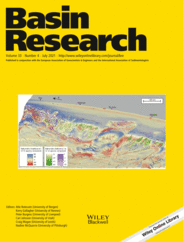
Full text loading...
 , William A. Ambrose2, Timothy F. Lawton2, Daniel F. Stockli3
, William A. Ambrose2, Timothy F. Lawton2, Daniel F. Stockli3
Late Palaeozoic continental‐continental collision and related sediment routing changes and evolution of sedimentary basins in southwestern Laurentia.
Sea level is thought to be the primary driver of alternating deposition of carbonate and siliciclastic sediment in shelf settings, with carbonates dominating during transgressive/highstands and siliciclastics during lowstands. Although sediment supply is critically important for shelf‐margin growth in siliciclastic systems, few studies demonstrate its impact on mixed carbonate‐siliciclastic systems. The Permian Basin in Texas, United States, provides an opportunity to investigate the basin evolution regarding the source, sediment routing and particularly shelf/slope growth from syn‐ to postorogenic phases during alternating carbonate and siliciclastic sedimentation. Published detrital zircon data show that the proportion of orogen‐related sources decreased significantly from an earliest Permian synorogenic phase (ca. 298 Ma) to a Leonardian (ca. 280–271 Ma) postorogenic phase, in concert with a grain‐size change from fine‐ to medium‐grained sand to silt. Although along‐strike lateral variabilities exist on the shelf margin, the shelf‐margin evolution characteristics show a significant difference among the Northern Shelf, Eastern Shelf and Central Basin Platform. The synorogenic Eastern Shelf exhibits a significant higher progradation rate than does the postorogenic Northern Shelf. The progradation and aggradation ratio of siliciclastic‐rich intervals in the Eastern Shelf is significantly higher than those of carbonate‐rich intervals in the Eastern Shelf and carbonate‐ or siliciclastic‐rich intervals in the Northern Shelf. In contrast, the Central Basin Platform, with no siliciclastic sediment supply, records almost no progradation regardless of orogenic phases. There is an increase in slope gradient with decreasing sediment supply during this second‐order sequence from the Permian Cisuralian Series to the end of the Guadalupian Series. This study demonstrates that tectonically driven siliciclastic sediment supply was the main mechanism controlling the shelf and slope evolution in alternating siliciclastic and carbonate deposition.
]
Article metrics loading...

Full text loading...
References


Data & Media loading...

